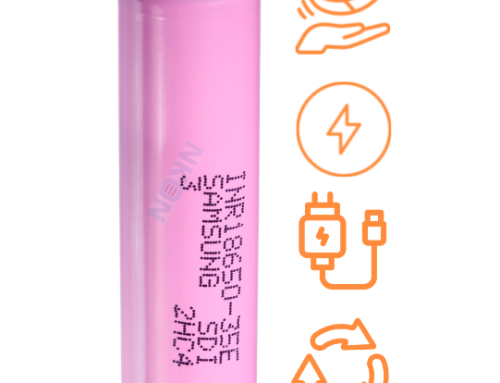Whether using lithium-ion, nickel-based, or lead acid rechargeable batteries, you want them to last for as long as possible with your devices. Constantly buying new rechargeable batteries is not cost-effective to your budget and may lead to using your devices less.
There are several ways for you to extend the life of your batteries, as well as several things not to do to avoid damage and lowering the battery’s capacity.
Battery Usage
When charging and discharging batteries, you want to try to use the same charger that came with the batteries. If the device comes with its own rechargeable batteries, you want to use those batteries specifically for that device. Battery chemistries are designed to provide a specific amount of power to the device, and this customization may not work with other devices.
Like your devices, never mishandle batteries as this could lead to damage or even thermal runaway (for lithium-ion chemistries). Never overload the battery while discharging. If you must buy new rechargeable batteries, match the battery’s capacity to the energy and power requirements of the application. Prevent mixing disposable batteries with rechargeable batteries, and don’t mix different brands of rechargeable batteries in a charger.
Both lead-acid and lithium-ion batteries should never be drained completely before they are charged. A complete drain of the battery will eventually cause damage when this is done constantly. Nickel-based batteries such as nickel-cadmium (NiCad) and nickel metal hydride (NiMH) can experience deep discharges as these can help prevent memory loss to the batteries. This periodic discharge helps to recalibrate smart nickel-based batteries.
If possible, use batteries in cool and dry environments. You should also try to keep batteries cool and dry when in storage.
Battery Charging
One of the most talked about charging methods for batteries is fast or ultra-fast charging. Due to the higher power needs of devices, people opt for this method so they can use their devices sooner. Unfortunately, fast charging is not great for lithium-ion batteries. The only battery that can handle fast charging is NiCAD, as you should fast charge it up to 70% capacity and then top it off at a lower charging rate.
Avoid charging batteries at high temperatures. Nickle-based batteries will not charge when they are hot, as you should not go above 70°F for lead acid and 122°F for lithium-ion. Lead acid and lithium-ion batteries should remain cool or slightly warm when charging. Nickel-based batteries will get warm while charging and will need to cool down to prevent damage. If charging batteries at lower temperatures, avoid charging lithium-based batteries below freezing. Nickel-based and lead acid batteries can be slow charged at 32°F and fast charged at 41°F.
The one thing to keep in mind is that it is better to apply a partial charge to certain battery chemistries versus applying a full charge. Full charges should be applied to lead acid and nickel-based batteries. While parietally charging these batteries is fine, it should only be done occasionally to prevent heat buildup and sulfation. For lithium-ion batteries, they should be partially charged up to 70 percent or near a full charge. You do not have to fully charge.
You should not be using the batteries as you are charging them. It can impact the charge reading level and make it unreliable. This problem may lead to you overcharging the battery. For smart batteries, they can change the charging algorithm based on the environmental conditions that the rechargeable battery is experiencing. They will prevent charging when it is too cold in the room or slow the charging rate if the temperatures are too warm.
Battery Storage
A common thing that you will hear is that you can extend the life of rechargeable batteries by placing them into the refrigerator. Most battery manufacturers discourage this. While cold temperatures are good for the batteries, the moisture in the refrigerator will lead to battery damage.
Instead, store your battery in a cool and dry location that is away from direct sunlight. Above room temperatures can cause batteries to self-discharge at a higher rate. You can store lead acid batteries fully charged while storing lithium-ion and nickel-based at partial charges or a lower state of charge can improve the lifespan of the battery.
Since batteries go through different rates of discharge, it is advisable to check the batteries if they will be stored for long lengths of time. Prevent lithium-ion batteries from being completely depleted by applying a charge.
Summary
Consider the application and adjust your battery usage, charging, and discharging methods to accommodate the device. Some devices will discharge batteries at high rates if the device is hot. Lower room temperatures or shut down the device for a small amount of time so that it cools off. If the battery cannot be removed from the device to be charged separately, don’t leave the device plugged in all the time or overnight as you sleep.
Unplug the device and continue charging when you are awake. Using the following methods can help you prolong the life of your rechargeable batteries, so you don’t have to constantly purchase new batteries for your devices.


